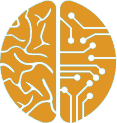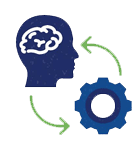PedsConcussion
—– LIVING GUIDELINE FOR ——
PEDIATRIC CONCUSSION CARE

www.pedsconcussion.com
FAMILY VERSION
This work is supported by the Ontario Ministry of Health Grant #720
Last Updated to Clinical Recommendation: May 31, 2022

Living Guideline for Pediatric Concussion Care
The Living Guideline was created in 2019 and is a collaborative project that involves concussion experts and researchers. The guideline is living because it is continually updated as new research becomes available. Using the most up-to-date evidence, we developed recommendations, tools and resources to support healthcare professionals to diagnose and manage concussion in children and adolescents aged 5-18 years. We reviewed the clinical guideline recommendations and created a summary of the most important information that you need to know as a family member, parent or caregiver of a child/adolescent with concussion. Like the guideline, this document is divided into three sections:
- Concussion Recognition, Assessment & Management
- B. Managing Concussion Symptoms
- Biomarkers
In each section you will find information from the guideline written in question and answer format. in For many of the questions, the clinical recommendations they align with are
Example:
Clinical Recommendation 1.1
At the end of this document resources and : 1. 1 you will see links to concussion the full list of clinical recommendations to help your child manage concussion.
This document was reviewed by persons and families with lived experience in concussion. If you have questions or would like to give feedback on this resource, please contact pedsconcussion@gmail.com
Concussion Recognition and Directing to Care
SECTION A:
Concussion Recognition, Initial Medical Assessment & Management

What is a concussion?
A concussion is a type of brain injury that affects how the brain works and body feels.
What causes a concussion?
Any blow or hit to the head, face, neck or body that causes sudden shaking of the head can cause a concussion. Concussions can happen in many ways such as from falling or colliding in sports or while playing, motor vehicle collisions or being hit by an object.
What are the symptoms of a concussion?
Symptoms of concussion describe how someone feels after their injury. A child/adolescent does not have to be knocked out or unconscious to have a concussion. Some symptoms may not appear until the next day. Common symptoms of a concussion are:
- Headache or head pressure
- Dizziness
- Nausea or vomiting
- Blurred or fuzzy vision
- Sensitivity to light or sound
- Balance problems
- Feeling slow, tired or having no energy
- Not thinking clearly
When should I suspect a concussion?
A concussion should be suspected in any child/adolescent who takes a blow to the head, face, neck or body and shows ANY of the signs or symptoms of a concussion. Use the Concussion Recognition Tool 5© to help you identify a concussion in children, adolescents and adults.
Clinical Recommendation: 1.4
For information about concussion in adults, see the Guideline for Concussion/Mild Traumatic Brain Injury & Prolonged Symptoms 3rd Edition for Adults Over 18 Years of Age.
What should I do if a child/adolescent may have a concussion?
If you think a child/adolescent has had a concussion:
- Remove them from the activity right away and look for red-flag symptoms (see below). This will avoid another injury and give you a chance to monitor them for concussion symptoms.
- Bring the child/adolescent to a doctor or nurse practitioner to confirm the diagnosis of concussion as soon as possible. Don’t leave them alone or let them return-to-sport (practice or gameplay) or other activities.
Clinical Recommendations: 1.2, 1.3, 1.4
What should I do if I’m not sure if a child/adolescent has a concussion? If you are unsure if a child/adolescent has a concussion, follow the “If in doubt, sit them out” rule. Bring the child/adolescent to a doctor or nurse practitioner to confirm the diagnosis of concussion as soon as possible.
Clinical Recommendation: 1.4, 2.1
What should I do if a child/adolescent shows red flag symptoms? Red flag symptoms are danger signs that indicate a more serious injury. Symptoms may appear right away or several hours up to a couple of days after the injury.
Red Fag Symptoms
- Severe or worsening headache
- Neck pain or tenderness
- Double vision
- Weakness or numbness in arms/legs
- Seizure or convulsions
- Loss of consciousness
- Increase in confusion
- Repeated vomiting
- Increase in restless, agitated or aggressive behaviour
- Slurred speech
If the child/adolescent shows any red flags symptoms, they need an emergency medical assessment right away. These red flag symptoms may appear immediately or within a few hours or days after injury. Call an ambulance or bring them to the hospital as soon as possible. If you call an ambulance, describe the specific red flag symptoms over the phone. Severe brain swelling (cerebral edema) after a concussion is very rare but can be fatal. Delayed red flag symptoms also require urgent medical assessment as they may indicate a more severe injury.
Clinical Recommendations: 1.2, 1.3,
